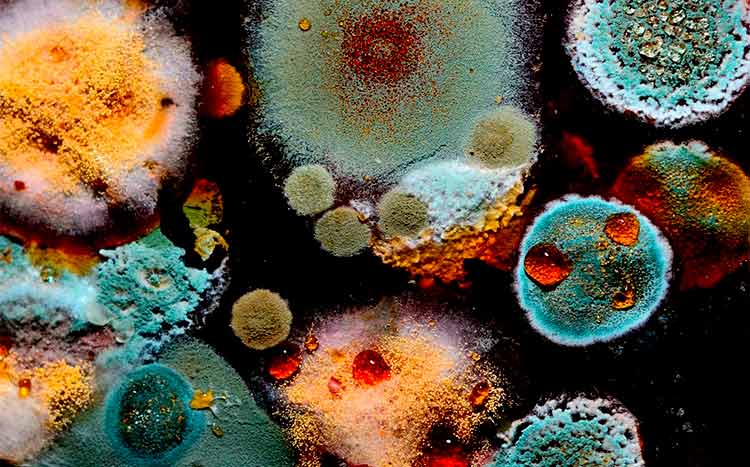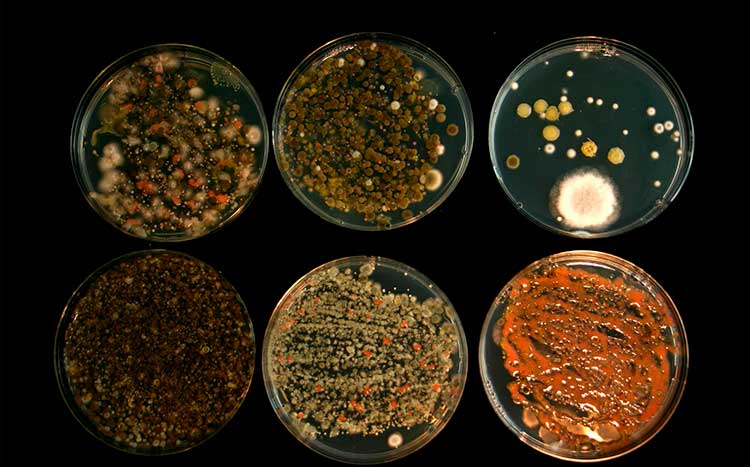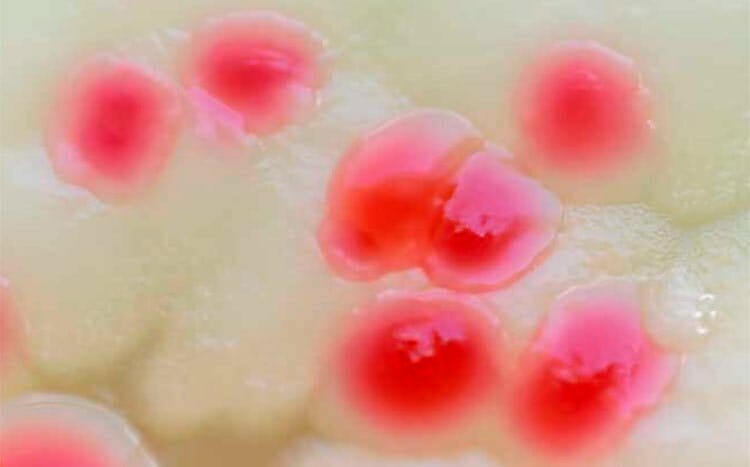Often, it’s the color of mold that first catches your eye, prompting the question: What can the color of mold tell us? Can we accurately assess its toxicity simply by observing its hue?
The mold that is found in homes comes in a variety of colors. The most popular colors include white, green, black, purple, pink, brown, orange, purple, and yellow.
These colors usually vary depending on the type of material on which the mold grows, the level of light to which it is exposed, and the amount of moisture content that is present on the surface on which the mold grows. As a result, a given species of mold can end up having different colors.
This is something that makes it challenging to classify mold depending on its color. It makes color a less reliable identifier of mold types and their characteristics.
Here is what you should know about mold colors and what they mean.

What we cover
ToggleMold vs Mildew: The difference?
Mold and mildew differ in terms of their texture, growth patterns, and the degree to which they penetrate the surface.
Mildew tends to be powdery and fluffy while mold tends to be slimy. And while mold generally penetrates the surface on which it grows, mildew generally grows on the surface. Mold also tends to grow in patches while mildew typically has a flat uniform growth.
Different colors (types) of mold
The following are the most common types of mold.
Black mold
Black mold is widely considered to be a toxic mold thanks to the fact that the toxic Stachybotrys chartarum mold is usually black in color. However, there are other types of mold species that are black in color but which don’t produce mycotoxins. This includes Cladosporium, Aspergillus, and Alternaria mold species.
Green mold
As far as homes are concerned, green mold is the most common. Most mold species are green in color, although if you see green mold in your home, it is likely that it is Aspergillus, Cladosporium, or Penicillium mold species.
Purple mold
In most cases, it is the dangerously toxic Stachybotrys chartarum mold that present in purple. Therefore, if you have purple mold in your home, chances are that it is toxic.
White mold
White mold is common in homes and is generally non-toxic. Mold species that have this color include Penicillium, Chaetomium, and Alternaria.
Brown mold
Brown mold is usually indicative of mold species that are fast spreading. And while these types of mold can cause allergic reactions, they are generally harmless. The only exception is the Mucor mold type because it is notorious for causing mucormycosis, a serious blood infection.
What are the reasons that mold comes in so many colors
Mold comes in so many colors because of differences in:
- Food source
- Degree of light exposure
- Species of mold
- Level of moisture present in the area that the mold grows
- The geographical location in that molds that grow in different climates tend to have different colors
What do colors indicate (mold)
While certain mold colors, like black mold, have gained a reputation of being toxic, while others like brown mold have a reputation of being largely safer, color isn’t a reliable indicator of the species or the characteristics of the mold in question. It is a more reliable indicator of where the mold has grown, the surface on which it grows, whether there is a lot of moisture where it is growing, and the general location or climate where it is growing.
But as far as toxicity is concerned, color isn’t a reliable indicator.
Most dangerous color (type) of mold
The most dangerous type of mold is black mainly because Stachybotrys chartarum mold is normally black in color. And since this mold species is notorious for producing mycotoxins and causing serious health complications, it is safe to say that this is the mold color type that homeowners should be concerned about.
However, it is important to note not all black mold is toxic. There are other less toxic species of mold like Aspergillus, Alternaria, and Cladosporium are sometimes black in color.
But if there is one color of mold that you should definitely avoid at all costs, it is the mold that presents in a bright yellow color. This is because this is usually an indication of the presence of slime mold — which is extremely toxic. And since other types of mold rarely exist in this yellow slime color, this is a pretty good indication that you should stay away.

Multi-Colored mold
Mold usually changes color depending on its stage of development, changing growing conditions, and light exposure. For example, Chaetomium mold typically changes its color depending on how far it is in its development. It may start off as white, then turn to grey, and then to brown. With time, it eventually settles to black. And in some cases, it can present all these colors at the same time as it grows and spreads.
Other types of mold can have several colors at the same time. For example, penicillin mold can be both white and blue or green in color. Trichoderma mold on the other hand is largely white and has green patches.
Most common places to check for mold in home
The most common places that you should check for mold include:
- Bathroom floors and walls
- Under the kitchen sinks
- Air conditioning ducts and vents
- Under or behind trash cans in the kitchen
- On and under carpets
- On your curtains
- Chimneys and fireplaces
- In the insulation in your attic
Test your mold
In order to test your mold, you need to take the following steps.
- Wear protective gear. This includes a respiratory mask, rubber gloves, goggles, and long-sleeved shirts.
- Take a scraper and scrape off some mold from the surface with the growth
- Place the scraped mold sample in a ziplock bag, test tube, or container provided by the testing company
- Send the sample to a mold testing company and then wait for the results
- After a few days or weeks, you will get the test results back telling you what type of mold is growing in your home
Mold control methods
You can effectively control and prevent mold by taking a few steps. Here are the most effective ones.
- Control humidity by investing in a good humidifier. The humidifier will remove excess moisture from the air in your home. This will reduce the overall amount of moisture in your home, something that will reduce the likelihood of mold growing on your walls.
- Improve airflow with appropriately sized fans and air conditioning systems. Better airflow in a home reduces the rate at which moisture condenses on surfaces. It thus discourages mold growth by eliminating mold-friendly conditions.
- Fix roof and plumbing leaks
- Use mold-killing products when cleaning your floors and bathrooms
How to get rid of the mold?
In order to get rid of mold, you need to first scrape the mold off the surface on which it is growing. After you are done, vacuum the affected area with a vacuum that is fitted with a HEPA filter in order to remove any remaining spores. Thereafter, simply clean the area with a mold-killing solution. This may be a solution of vinegar, baking soda, alcohol, or commercial-grade mold-killing solutions. The last step is to make sure that the surface dries out by exposing it to direct sunlight, improving airflow in the room, or blotting out any excess moisture.
FAQ's
What color of mold is dangerous?
The mold that is purple, black, or slime yellow tends to be generally dangerous.
What color does mold start out as?
Most molds start out as either white or green, although the color in which the mold starts out varies widely.
What does dangerous mold look like?
While most dangerous mold types are black and purple in color, it is virtually impossible for the average person to determine whether mold is dangerous by just looking at it with their naked eyes. This is so mainly because there are thousands of mold species and even the same species can have different colors depending on the conditions under which they grow.
How can you tell if mold is toxic?
The best way to tell whether mold is toxic is to take a sample of the mold and then send it to a laboratory. It will be tested, the exact species of the mold will be identified, and you will then be advised on whether it is toxic or not.
In cases where loved ones are already experiencing side effects normally associated with exposure to toxic mold, a blood test will be able to show whether mycotoxins — normally released by toxic mold — are responsible for the symptoms that the loved one is experiencing.
Another way you can tell whether the mold is toxic is to hire a mold testing company. Through their experience, expertise, and training, they will be able to appropriately identify, test, and then confirm whether it is toxic or not.
Unfortunately, color isn’t a reliable indicator of the toxicity of mold. Some black molds aren’t toxic. While grey, green, and even brown mold can be toxic even though most mold species that present in these colors are generally non-toxic.
Does anti-mold paint work?
Yes, anti-mold paint works. This is because they contain biocides and other additives that discourage mold growth even in areas that have high humidity. While they aren’t a one-size-fits-all solution for preventing mold, they usually reduce the likelihood of mold growth.
Can mold grow anywhere?
No, mold cannot grow anywhere. It has to have a food source and moisture in order to grow. Therefore, it can’t grow on surfaces like gypsum that don’t provide it with a food source. Surfaces that are dry or which don’t absorb moisture like glass, also make it almost impossible for mold to grow on them.

Use this free tool to get help from mold remediation experts
If you are looking for help dealing with a mold problem, the first place you should go to is HomeGardenGuides.com. It offers a free service that quickly matches you with the top-voted local mold remediation contractors.
Using the website, you can get 3 estimates fast by real certified experts in your area in just 2 minutes. Here is how it works.
- You scroll to the top of the page and enter your Zip code.
- Answer questions about your mold remediation needs
- Your details will be forwarded to three local experts.
- You will then receive a price estimate for the job and some friendly advice.
IMPORTANT: There is no obligation to hire. This is a free tool and service to be used at your pleasure.














